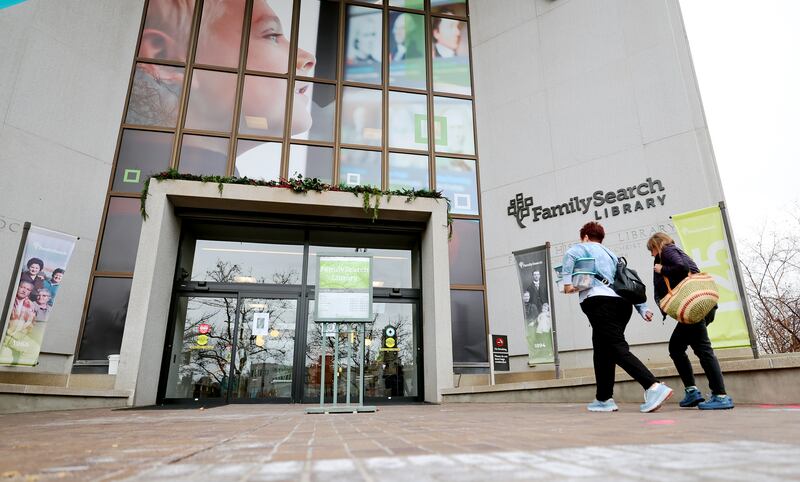Recent headlines have given rise to questions regarding the nature of finances in a religious institution, particularly The Church of Jesus Christ of Latter-day Saints.
Why would a church retain such significant assets?
Suspicion can foster sensationalism, which is exacerbated by rampant distrust in organizations at large.
A closer examination, however, is valuable. Among others, the following five principles provide a deeper perspective into the importance of finances within a church.
Operational reality
In a discussion that took place many years ago, an idealistic young man explained to his father that his only desire was to help others and, henceforth, would make every vocational decision based only on the merits of this wish. “Son,” the father replied, “all the love in the world and a few hundred thousand dollars are going to build the next chapel.”
While such a pragmatic response may initially yield a distaste for the role of finances in assisting others, the truth is you cannot give what you do not have — be it time, energy, commodities or money. A growing institution requires resources.
Worldwide missionary efforts, family history research and resources, welfare provisions, philanthropic and volunteer initiatives, educational pathways and many other programs are maintained by the Church of Jesus Christ without the prospect of financial return. Moreover, meetinghouses, seminary and institute buildings, temples, school campuses and other facilities necessitate funding. These programs and core assets consume much more than they generate.
Fiscal sustainability
Less than two years after the formal establishment of the church, President Joseph Smith penned an outrageously visionary financial aspiration for what was a fledgling faith — it should eventually “stand independent” of any person or institution.
To stand independent while giving so much, The Church of Jesus Christ of Latter-day Saints abides by two simple principles. First, it does not spend more than it receives. Second, a portion of the annual income is set aside as a reserve. For decades, the church has followed these principles.
In terms of having a financial reserve or to those who take issue with the amount, we ask: “What would happen to the aforementioned programs if extensive contingencies and unanticipated needs arise with too narrow a reserve?” The answer is quite simple; depending on the magnitude of the crisis, they would be rationed or cease to exist.
Biblical basis
Jesus told a parable of a master who gave three servants a sum of money. The man then left for some time and, upon returning, required each to report on what they had done with his wealth.
Two servants had doubled the initial investment. “Well done thou good and faithful servant: thou hast been faithful over a few things, I will make thee ruler over many things: enter thou into the joy of thy lord,” was the master’s reply to these stewards.
The third was ashamed. “I was afraid and went and hid thy talent in the earth.” His master severely chastised him as a “wicked and slothful servant.”
Evidently, it is not good for us to squander, renounce or simply return what has been entrusted to us. Stewards strive to protect and improve that which is in their care.
Prudent stewardship
In considering the story of the widow’s mites, we imagine that this poor woman would expect her offering to be preserved, cultivated and eventually put to use in effective and meaningful ways. A steward over these contributions has a hallowed responsibility to make that hope a reality.
At their best, humanitarian efforts catalyze extraordinary changes that cannot be measured. Yet, success in philanthropy is difficult to get right. Stewards have a responsibility to identify, evaluate and make prudent allocations into opportunities with a low risk of unintended negative consequences. The possibility of inefficient implementation, lack of impact, fraud and potential dependency must be weighed.
Imagine how this same widow might feel if she discovered that her wholehearted donation was given away with little discretion merely to satisfy the demands of others who do not feel the weight of fiduciary duty.
Spiritual connection
Notwithstanding the extensive humanitarian efforts made by Latter-day Saint Charities, it is noteworthy that the Church of Jesus Christ does not characterize its primary purpose in traditional philanthropy. As demonstrated by the Savior’s ministry, the church’s fundamental mission is spiritual in nature.
In a timeless fable, a traveler discovers a group of stonecutters and asks what they are doing. The first responded, “I am making a good living.” The second answered, “I am doing the best job of stonecutting in the entire country.” But the third looked up as if he could see something that no one else could and said, “I am building a cathedral to my God.”
Drew Faust, former Harvard president, described that “the very menial work of stonecutting becomes part of a far larger undertaking, a spiritual as well as a physical construction.” This project “(transcends) the timebound … for cathedrals are built not in months or even years, but over centuries. A lifetime of work may make only a small contribution to a structure that unites past and future, connects humans across generations and joins their efforts to purposes they see as far larger than themselves.”
While some may still find the notion of tithing and a financial reserve unsettling, perhaps this parable is one way for all to appreciate a link between religious tenets and temporal affairs.
Like the stonecutters, members from around the world and across generations are connected in their contributions. And speaking for those voluntarily donating, it is comforting to know that from any objective standpoint, The Church of Jesus Christ of Latter-day Saints is a most astonishing case study in economic sustainability.
Joshua Taylor, CFA, is the executive director for the Michael O. Leavitt Family Office and Foundation. Robert Tanner, CFA, is a fixed income director at Cigna. Both are former employees of Ensign Peak Advisors.

